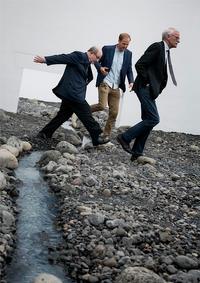Towards Hydroscopic Design
Professor Anne Holtrop, assistant Cecilia Marzullo
Professor Milica Topalović, assistant Muriz Djurdjevic
Professors Daniel Mettler, Daniel Studer, assistant Yufei He
This semester, in response to the topic of durability, we will focus on water. The studio will research water as an agency continuously shaping our environment and reacting to and forming other materials. At the same time, water will also be seen as the crucial element shaping the work of an architect.
Our relationship with water is complex and contradictory. Water is vital to all forms of life and to the genesis of matter, organic and inorganic. And yet it remains relatively invisible, and as a design agent, underestimated.
Architecture today is to a large extent about controlling water, whether in the atmosphere, in the soil, or in the building. Condensation, rainwater penetration and unwanted moisture can damage the building and impact its longevity. An architect’s response to durability of a construction and its materiality generally consists of designing resistance against weathering caused by water.
Our society increasingly demands controlled, standardised comfort: the building envelope separates indoor and outdoor climates and ecologies; the vapour barrier keeps window openings airtight and ensuries the high performance of thermal insulation. In turn, the pesticide-applied plaster prevents mould growth on the façade.
Seen in a wider territorial frame, analogous to its role for architecture, the control of water following the Industrial Revolution has been crucial to the creation of modern rationalised landscapes we now inhabit. It appears however that the modern mentalities and techniques of control of water have reached their limits. Today, water stands at the centre of the most urgent environmental challenges—from the melting glaciers, increasing droughts and floods and the demand for (green) hydroenergy, to the struggles over water pollution and access to water sources, water is becoming increasingly precious, scarce and politicised. This diploma offers a possibility to reimagine the notion of durability by reconsidering our fraught relationship with water. In a movement from hydrophobic to hydroscopic design of buildings and environments, we will embrace the fundamental and unique characteristics of water and its influence on the changing states of matter and ecologies in the territory and architecture.
The sites we will study and travel to are situated in the Valais on the slopes of Jungfraujoch, from the summit to the underground lake of St. Leonard. Following the trail of water, we will encounter extraordinary places—convergence of glaciers, geological formations, an ancient alpine pilgrimage route, a water reservoir and a dam, rare crystal and mineral sites, riverbed movements, an active gypsum quarry and a salt mine, a 3000-meter-deep hydrothermal borehole, and the largest underground lake of Europe.
Within this large territory you will choose your specific site to work with, in order to design a public building, a space and/or a landscape of hydroscopic qualities. The work of the studio will be a collective statement of care for and celebration of water. The work be experimental and deeply engaged with the very ethos of contemporary architecture at different spatial scales from the building to the territory.
Description of preparation and elaboration phase in key-words: Territory, site, time, geology, hydrology, ecohydrology, landscape history, corrections of water bodies, water and hydroenergy infrastructures, water pollution, water as a common good, material sourcing and flows, places of production, material properties, material performance, specialised production techniques, craftsmanship, construction techniques, structure, cultural significance, climate change, rights of nature. Work to be done in preparation phase: Focusing on the water trail from the Jungfraujoch summit to the underground lake of St. Leonard, you will research water as an agency of material and landscape formation. In parallel, you will reflect on the social and cultural attitudes to water, and on design responses to water in construction.
Your hydroscopic design approach will be based on you exploratory research in the preparatory phase. The understanding of water character in your site, seen in geological, ecological and cultural perspective, will be the basis of your design program and design tools. Water as landscape and material-forming agent will guide you in transforming and designing a space and/or a landscape of your site: a space that is born from the site in its material consistence, and constructed in harmony or in contrast to the previous gestures and traces that formed the site.
Throughout the entire diploma period, the students will be required to work with physical (fragment) models exploring design configurations, material behaviour and conducting laboratory experiments. The research is also captured in writing, drawings, maps, photography and video.
